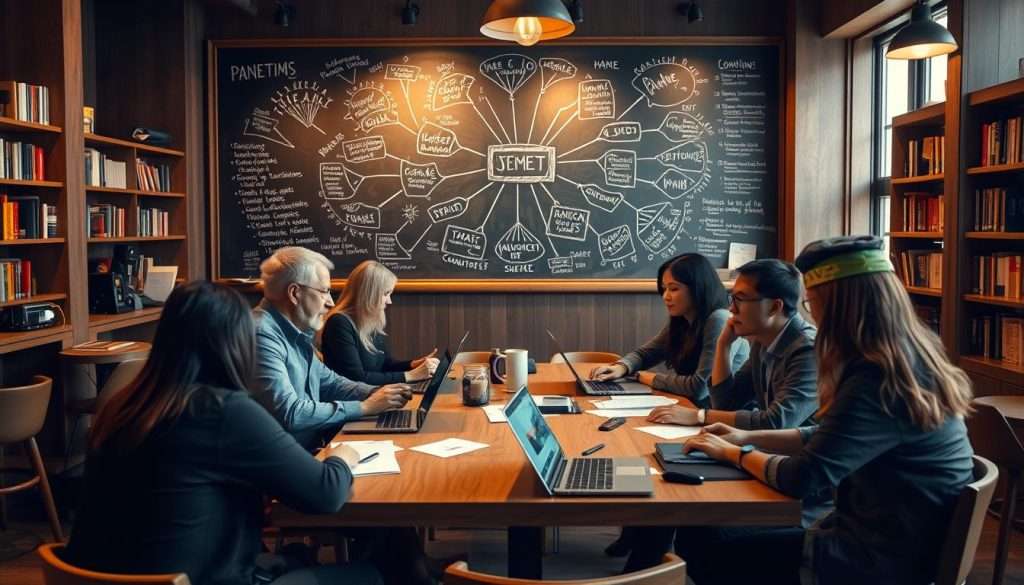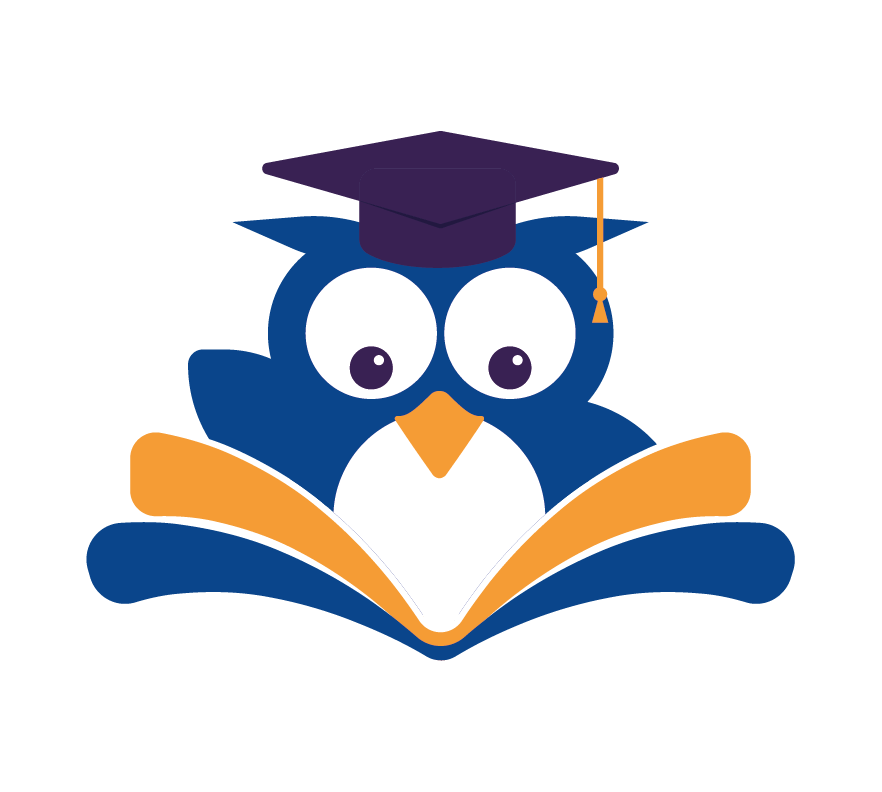Ever thought about making learning last longer? We often study for hours but forget what we learned soon. Is there a way to keep more of what we learn?
Dr. Tracey Tokuhama-Espinosa, an educational researcher, says, “The ultimate test of learning is using what you’ve learned in new ways, not just in class.” This shows how key knowledge retention is in learning.
When we learn something new, our brains make new connections. The more we practice or recall what we’ve learned, the stronger these connections get. In this article, we’ll look at proven tips to help you keep more of what you learn.
Key Takeaways
- Effective learning techniques can improve knowledge retention
- Practicing recall strengthens neural connections
- Applying learned information in new contexts enhances retention
- Deliberate reinforcement is crucial for long-term retention
- Simple techniques can make a significant difference in learning outcomes
The Science Behind Knowledge Retention
Ever wonder why some info sticks in your mind while others fade? It’s all about how our brains process and retain info. When we learn something new, our brains make new paths. The more we see this info, the stronger these paths get.
How Your Brain Processes and Stores Information
Our brains are designed to keep info, but how we learn affects this. Repetition is key to making new connections stronger. When we go back to what we learned, it’s easier to remember.
This is why spaced repetition works so well. It helps us remember by reviewing at longer intervals. This boosts our ability to hold onto what we learn.
The Forgetting Curve and How to Combat It
Studies show we forget about 50% of new info within an hour. This is the “forgetting curve.” It shows how fast we forget without practice. To fight this, using active recall and spaced repetition helps a lot.
By recalling info from memory, we make it stick better. Adding these methods to our learning can really help. It makes us better at knowledge exchange and educational sharing.
Knowing how our brains retain info and using smart learning strategies can boost our learning. This not only helps us but also builds a culture of learning sharing.
Why You Should Share What You Learn
Sharing your knowledge helps others and strengthens your own understanding. This is key to learning well and keeping what you learn. When you share, you help both yourself and your audience.
The Teaching Effect: Learn Better by Teaching Others
Teaching what you’ve learned is a great way to make it stick. You have to explain complex ideas simply, which helps you understand better. Studies show that you’ll remember 90% of what you learn if you teach it or use it right away.
By teaching others, you’re not just helping them. You’re also making your own knowledge stronger. This sharing boosts your ability to remember and use what you’ve learned.
Creating Accountability Through Knowledge Sharing
Collaborative learning is another big plus of sharing your knowledge. When you teach others, you’re more likely to remember the info yourself. This feeling of responsibility can really motivate you to learn more.
By sharing your knowledge, you’re not just keeping it for yourself. You’re also adding to a community of learners. This shared learning can bring new ideas and deeper understanding to everyone involved.
Effective Note-Taking Strategies for Better Retention
To really learn and keep information, you need a note-taking strategy that fits you. Good note-taking isn’t just writing down everything. It’s about capturing the main points in a way that makes sense to you.
The Cornell Method for Organized Learning
The Cornell Method is a structured way to take notes. It divides your paper into three parts: cues, notes, and summary. This method helps you organize and review your notes well.
Step-by-Step Implementation Guide
- Divide your paper into three sections: a narrow left column for cues, a wider right column for notes, and a bottom section for summarizing your notes.
- During a lecture or while reading, take notes in the right-hand column, focusing on key concepts and ideas.
- In the left-hand column, jot down cues or questions that relate to your notes.
- After the lecture or study session, summarize your notes in the bottom section.
When to Use This Method
The Cornell Method is great for subjects needing lots of detail, like history or literature. It’s also good for organizing notes from different sources into a single study guide.
Mind Mapping for Visual Learners
Mind mapping is a visual note-taking method. It uses colors, symbols, and images to represent ideas. This method is perfect for visual learners as it helps create a mental image of the information.
As visual learners often find, mind maps are a powerful tool for recalling information. By linking ideas with images, you can improve your memory and make complex information easier to handle.
Digital vs. Handwritten Notes: Finding Your Style
The debate between digital and handwritten notes is ongoing. Each has its own benefits. Handwritten notes are more personal, while digital notes are easier to access and organize.
Trying out both methods can help you discover what works best for you. Some prefer typing notes for easier review, while others find handwriting helps them remember better. As noted by experts, the key is to find a method that matches your learning style.
By using these effective note-taking strategies, you can greatly improve your knowledge retention and learning experience. Whether you like the Cornell Method, mind mapping, or a mix of digital and handwritten notes, the most important thing is to find a system that suits you and stick to it.
Active Recall: The Most Powerful Learning Technique
Active recall is a game-changer for learning and remembering new stuff. By actively recalling info instead of just reading it, you boost your retention and understanding.
Implementing Spaced Repetition in Your Study Routine
Spaced repetition is a great way to use active recall. It means reviewing material at longer intervals to lock it in your memory. For instance, review a concept one day, then a week later, and after a month. This stops the “forgetting curve” in its tracks.
To use spaced repetition, pick key concepts you want to remember. Then, plan a schedule to review them at longer intervals. You can use digital tools or apps to keep up with your schedule.
Creating Effective Flashcards and Practice Tests
Flashcards and practice tests are also powerful for active recall. Flashcards give you a prompt on one side and the answer on the other. Practice tests mimic the real test experience, helping you remember info under test conditions.
Physical vs. Digital Flashcard Systems
There are two ways to make flashcards: physical or digital. Physical cards are more hands-on and fun. Digital apps are convenient and flexible. Pick what suits you best, or mix both for a hybrid approach.
Testing Strategies That Enhance Memory
When making practice tests, focus on retrieval practice. Try to recall info from memory. Also, use interleaving, switching between different material types to deepen your understanding. Try different strategies to see what works best for you.
Practical Ways to Share What You Learn
Sharing what you learn helps others and strengthens your own understanding. There are many ways to share your knowledge. We’ll look at some of the best methods. Using these strategies can improve your learning and memory.
Starting a Blog or Newsletter
Starting a blog or newsletter is a great way to share your knowledge. Writing about what you’ve learned helps you organize your thoughts. It also lets you reflect and get feedback from others. This deepens your understanding and shows where you need more practice.
You can use WordPress or Mailchimp to manage your blog or newsletter.
Hosting Study Groups or Discussion Circles
Hosting study groups or discussion circles is another good way to share and learn. Meeting with others who share your interests can lead to deep conversations. This approach keeps you motivated and helps you explore topics more deeply.
Using Social Media as a Learning Platform
Social media is a powerful tool for sharing knowledge and connecting with others. Posting about what you’ve learned can start discussions and share resources. Platforms like Twitter, LinkedIn, or Facebook help you reach more people and stay updated.
Creating Educational Content (Videos, Podcasts, Infographics)
Creating educational content like videos, podcasts, or infographics makes sharing knowledge fun and easy. Different formats appeal to different learning styles. For example, you can make video tutorials with Camtasia or Loom, or design infographics with Canva or Piktochart.
- Create video tutorials to explain complex concepts
- Start a podcast to discuss topics in-depth
- Design infographics to visualize data and statistics
By using these strategies, you can improve your understanding and share your knowledge. Whether you start a blog, host a study group, or create content, find what works for you and keep at it.
Digital Tools and Platforms for Knowledge Management
Using the right digital tools can really help you keep and share knowledge. Today, it’s key to have good platforms for managing and sharing info.
Note-Taking Apps and Knowledge Bases
Evernote and OneNote are great for organizing your notes. They let you sort notes, add tags, and even record audio. Notion is a knowledge base that lets you store info in one place, accessible from anywhere.
Collaborative Learning Platforms
Slack and Microsoft Teams make group work easier. They let you share files, talk, and work on projects together. This way, you can learn from each other more easily.
Content Creation and Sharing Tools
Canva and Loom help you make great educational content. You can make cool infographics, videos, and presentations to share your knowledge.
Here’s a look at some popular digital tools for managing knowledge:
| Tool | Purpose | Key Features |
|---|---|---|
| Evernote | Note-taking | Tagging, audio recording, web clipping |
| Notion | Knowledge Base | Centralized repository, customizable templates |
| Canva | Content Creation | Graphic design, templates, collaboration features |
Using these digital tools and platforms can really boost your ability to keep and share knowledge. As experts say, tools like Whatfix help L&D leaders keep knowledge fresh, reduce forgetting, and speed up skill learning with in-app help and analytics.

Overcoming Common Barriers to Knowledge Retention
When we explore knowledge retention, we must tackle common obstacles. Dr. Tracey Tokuhama-Espinosa highlights the role of autonomy in learning. She believes students should take more control over their learning and self-assessment. Knowing these barriers helps us find ways to overcome them and improve our learning journey.
Dealing with Information Overload
In our data-rich world, we face a lot of information. To deal with this, we must focus on what’s most important. Effective filtering and organization techniques are key. Tools like note-taking apps or knowledge bases can help organize information, making it easier to handle.
Finding Time for Deliberate Practice
Deliberate practice is vital for solidifying new skills and knowledge. Yet, finding time for it can be tough. Scheduling dedicated practice sessions and keeping to them is crucial. It’s also vital to eliminate distractions during these times to get the most out of them.
Maintaining Motivation and Avoiding Burnout
Keeping motivation up is essential for ongoing learning. Setting realistic goals and celebrating small wins can boost motivation. Also, avoiding burnout by balancing work and life is key. This means taking breaks and doing things outside of learning.
| Barrier | Strategy | Benefit |
|---|---|---|
| Information Overload | Prioritize and organize information | Better information management |
| Lack of Time for Practice | Schedule dedicated practice sessions | Improved skill retention |
| Burnout | Maintain a healthy work-life balance | Sustained motivation and well-being |
Building a Personal Learning Network to Amplify Your Knowledge
Creating a personal learning network is a big step for anyone wanting to grow their knowledge. It lets you connect with others who think like you. This way, you gain access to lots of information and support that can boost your learning.
Finding Your Learning Tribe
Finding your learning tribe means finding people who share your interests. You can do this online, through social media, or at local events. Joining a community of learners gives you motivation, support, and insights that make learning better.

Giving and Receiving Feedback
Getting and giving feedback is key in educational networking. Sharing your work lets you get feedback that helps you improve. Being open to feedback helps everyone learn and grow together.
Collaborative Projects and Co-Learning
Working on projects with others can really help you learn. By combining your knowledge, you can reach a goal together. This way of learning promotes knowledge exchange and helps you understand things better.
Through co-learning, you also learn teamwork, communication, and problem-solving. These are important skills for life.
Conclusion: Transform Your Learning Through Sharing
Sharing what you learn is a great way to make your knowledge stick. It also helps others grow. By using the tips we’ve shared, you can learn better and keep more information.
Learning is all about sharing what you know. By doing this, you change how you learn. Start sharing your ideas on blogs, social media, or in study groups.
This way, you’ll understand things better and join a community that loves to share. So, start sharing what you’ve learned today. Your fellow learners are eager to hear from you!

